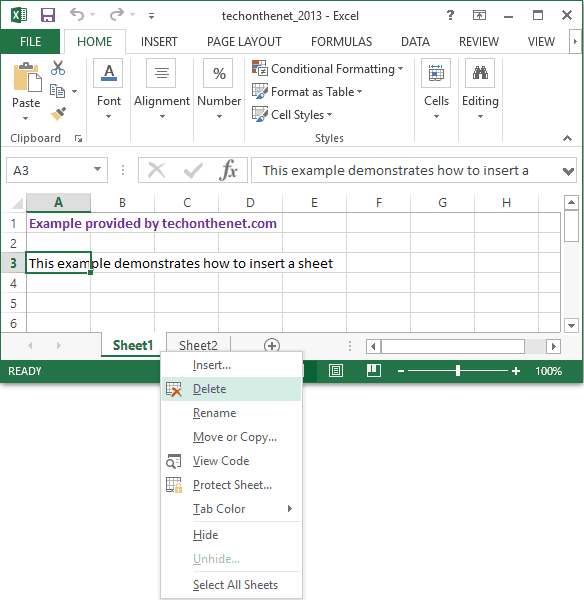5 Proven Methods to Undo Deleted Excel Sheet

In an increasingly digital work environment, Excel spreadsheets have become an indispensable tool for data organization, analysis, and reporting. However, even the most vigilant users can accidentally delete a crucial sheet, leading to potential data loss. Whether it's a simple misclick or an unintentional keyboard shortcut, recovering a deleted Excel sheet can seem like a daunting task. Fortunately, there are several proven methods to undo a deleted sheet in Excel, ranging from built-in features to external solutions. Here are five methods to retrieve your lost data:
Method 1: Undo Action Immediately

The simplest and fastest way to recover a deleted Excel sheet is by using the Undo feature:
- Press Ctrl + Z (Windows) or Cmd + Z (Mac) on your keyboard immediately after deleting the sheet.
- If you have recently saved your file, this might not work as Excel considers the deletion part of the saved state.
- Alternatively, go to the “Edit” menu and select “Undo Delete Sheet.”
Method 2: Recover from Autosaved File

Excel’s AutoRecover feature saves your workbook at regular intervals, providing an opportunity to recover unsaved changes:
- Open Excel and select “File” > “Info.”
- Click on “Manage Document” or “Manage Workbook” and then choose “Recover Unsaved Workbooks.”
- Look for versions of your file saved before the deletion and open the one with your sheet.
- Save this recovered version to replace your current file or as a backup.
⚠️ Note: AutoRecover files are temporary and can be deleted automatically by Excel. Set up AutoSave options in Excel to ensure you do not lose critical data.
Method 3: Use Version History

If you are using OneDrive or SharePoint, Excel’s version history can be a lifesaver:
- Navigate to “File” > “Info” > “Manage Workbook” > “Browse Version History.”
- Here, you will see versions of your file saved automatically by the cloud service. Scroll through and find the version with your sheet.
- Open and save this version or restore it as needed.
Method 4: Excel Backup Files

Excel creates backup files with a .bak extension. These can sometimes be the key to recovering lost data:
- Locate the folder where your Excel files are saved.
- Look for files with the same name as your workbook but with a .bak extension.
- Rename the .bak file to have a .xlsx extension.
- Open the renamed file in Excel to check if it contains the deleted sheet.
💡 Note: .bak files are not always guaranteed to have the most recent versions of your data. They are backups created during certain Excel operations.
Method 5: Professional Recovery Tools

If all else fails, data recovery software can be your last resort:
- Programs like EaseUS Data Recovery Wizard, Recuva, or Stellar Data Recovery can help you scan your hard drive or storage device for deleted Excel files.
- Follow the software’s instructions to search for and recover lost Excel sheets.
- Be prepared to scan through potentially large amounts of data, as these tools recover all deleted files.
In wrapping up, the retrieval of a deleted Excel sheet can be approached through several methods, each with its own merits:
- Immediate Undo provides the quickest solution when you catch the mistake right away.
- Autosave Files and Version History are particularly useful if you leverage cloud storage solutions like OneDrive or SharePoint.
- Backup Files might not always hold the latest data, but they can save you from redoing work.
- Professional Recovery Software is your fallback when all internal options have been exhausted.
The importance of regularly saving your work, understanding Excel’s features like autosave, and using cloud services for better data protection can’t be overstated. By adopting these practices, you not only safeguard your data but also simplify the recovery process in case of accidental deletions.
With these methods in your toolkit, you can confidently work in Excel, knowing that you have multiple avenues to recover lost sheets, thus minimizing downtime and frustration. Remember, prevention is always better than cure, so making Excel a more secure environment for your data is a wise approach.
Can I recover a deleted Excel sheet if I’ve saved the workbook after deleting it?

+
Yes, you can recover a deleted sheet from autosave files, version history, or professional recovery tools if you’ve saved after the deletion.
How long does Excel keep autosave files?

+
Excel keeps autosave files for a default period, often up to four days, unless you change the settings or manually delete the files.
Is it possible to recover a sheet deleted by someone else with editing permissions in OneDrive or SharePoint?

+
Yes, you can use the version history to revert to a version of the file before the deletion was made by another user.
What if the Excel file was saved on a network drive?

+
Recovery might be possible through network backup systems or IT department retrieval, or by using professional recovery software if permissions allow.
Are there any preventive measures to avoid accidental deletions in Excel?

+
Regular saving, setting up autosave, using version control, and educating users about careful handling of data can minimize the risk of accidental deletions.